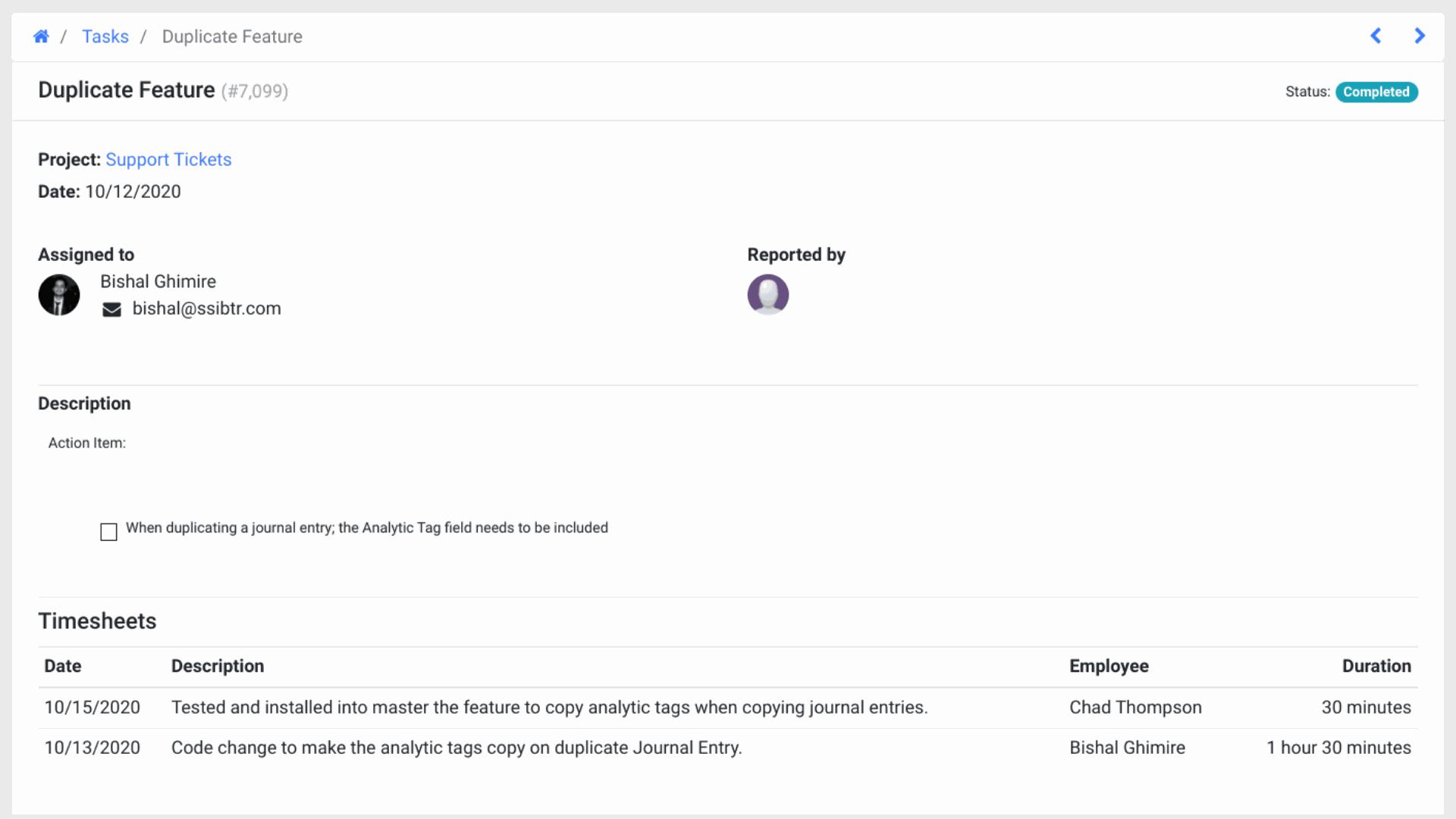Odoo is well known for its ERP features including Accounting, Sales, Inventory, Manufacturing and many more. One of the often overlooked features is the built in native Web Portal. Out of the box, all Odoo users have the ability to share their data directly with their customers in a customized and secure web portal.
The web portal in Odoo is built within the native website and ecommerce platform but those apps are not required in order to leverage digital invoices, quotations, and any other record that you could want to share with your partners.
Here is an example of our web portal:
As you can see from the picture above, users have access in the portal have access to many modules. Additional custom modules can be added into the portal to display whatever important information you would like to show.
For Customers
Companies using Odoo can allow their customers access to the portal to see their Digital Quotations, Sale Orders, Subscription, Shipments, Invoices, Projects, Tasks and Timesheets. If your company ships goods to customers, all of the relevant tracking information is made visible to the user directly from the sales order.
For companies using the Odoo Project apps, this functionality helps to keep the customer and vendor in sync on the status of their tasks as well as communicate in real-time directly from the portal.

In this example above the customer can see their request with a description of the task that we are working on and the timesheets related to the work performed.
Along with projects and tasks, customers can see their invoices and make payments directly in the portal. It is never necessary to run a statement for a customer when they have complete transparency to your records.
For Vendors
Odoo offers the same functionality for your vendors to login to the portal and see their Purchase Orders and the status of their bills to you. Similar to a customer portal, this sort of access can save all parties valuable time in researching discrepancies or understanding the status of their business together.
A new feature in version 14 takes the vendor portal further by allowing vendors to confirm expected receipt dates of your Purchase Orders. At first glance this may seem like a lot to ask of a vendor, but Odoo makes this process easy by automated emails to the vendor for them to confirm receipt of the order and confirm that they will meet the delivery expectations in the Order.
Custom Modules
Custom modules can be exposed into the portal as well by a qualified partner.
Some examples include:
Commissions Portal - In the event that your company leverages an outsourced (non-employee) sales team you can give those users who may not have internal access to Odoo access to their customer sales data and their commissions due.
Job Portal - If you have a job based business you may have multiple vendors or partners all involved in the same job. In this case the web portal can be used to consolidate information appropriately for each player involved in the job.
Documents - The documents app can be integrated into the web portal for customers to securely upload their documents directly into your system.
Returns - If your company chooses to allow customers to return goods without customer interaction the entire process can be initiated and completed within the customer portal, including the creation of a return label by UPS or another supported carrier.
Summary
The web portal in Odoo is an extremely valuable feature, especially when companies need to share important information with their business partners (customers or vendors) but cannot allow those users into the back end of the system. Through user permission settings and record rules the users are exposed to the amount of information that you choose to show and nothing more.
